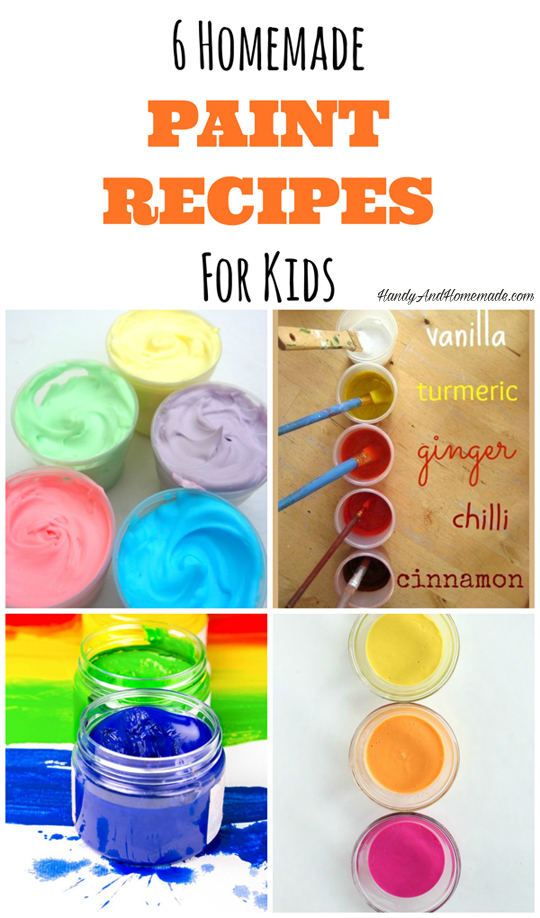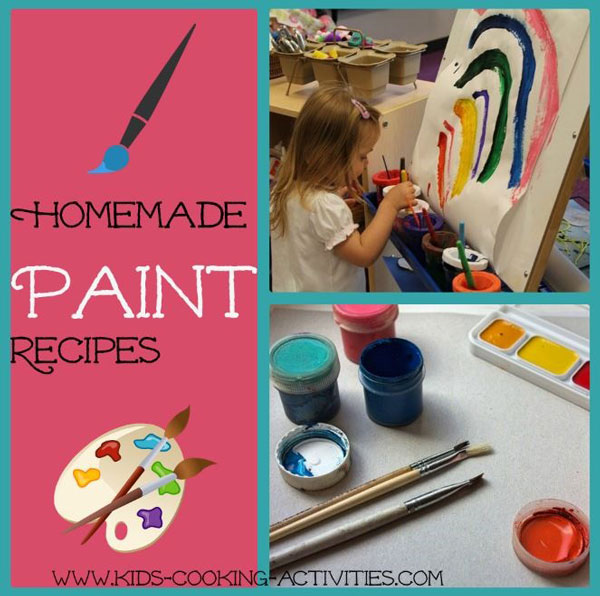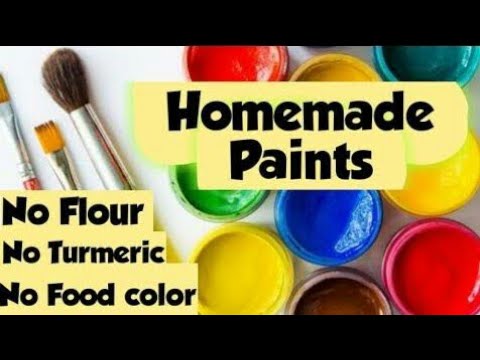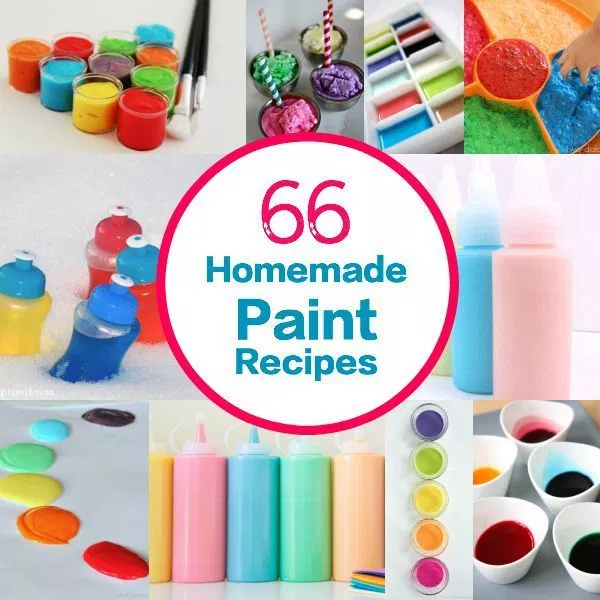Are you looking for a fun and eco-friendly way to unleash your creativity? Homemade paint recipes might just be the perfect solution! Not only are they easy to make, but they also allow you to customize colors and textures to suit your artistic vision. In this guide, we’ll dive into simple recipes that you can whip up with ingredients you probably already have at home. Plus, we’ll include some amazing video tutorials to help you along the way!
Benefits of Using Homemade Paint

Choosing to make your own paint comes with a plethora of benefits that go beyond just saving money. Here are some compelling reasons why you might want to consider whipping up your own paint:
- Eco-Friendly: Homemade paint recipes often use non-toxic and biodegradable ingredients, making them safer for both the environment and your home. For example, using natural dyes from fruits or vegetables reduces chemical waste.
- Cost-Effective: You can create a large batch of paint for the price of a few store-bought colors. Ingredients like flour, salt, and water are typically inexpensive and can be found in your pantry.
- Customizable: One of the best parts about making your own paint is that you can experiment with colors and textures. Want a deeper shade of blue? Just add more dye! Prefer a thicker consistency? Adjust your ratios accordingly.
- Creative Experience: The process of making paint is an art in itself! It encourages you to engage with the materials and discover new artistic techniques.
Additionally, making your own paint can be a delightful activity to share with kids or friends. It fosters creativity and can turn a simple art session into a memorable experience. Imagine mixing colors together, watching the transformation, and then using them to create your masterpiece!
Incorporating homemade paint into your projects not only enhances your creativity but also allows you to take pride in knowing exactly what’s in the paint you’re using. So why not give it a try? With the right recipes and a little bit of experimentation, you’ll find that the world of homemade paint is full of possibilities!
Also Read This: How to Wear Abaya Scarf on Dailymotion
3. Essential Ingredients for DIY Paint

Creating your own paint at home can be a rewarding and fun project! Before you dive into the mixing, it’s important to gather some essential ingredients. Here’s what you’ll need:
- Base: This is usually water, but for certain types of paint, you might use milk or vinegar.
- Pigments: You can use natural ingredients like spices (turmeric for yellow, beet juice for red) or commercial pigments if you want more color variety.
- Binders: Binders help the paint stick to the surface. Common options include corn syrup or glue.
- Additives: These can enhance the paint's properties. For instance, vinegar can act as a preservative, while baking soda can give a textured finish.
- Thickeners: Ingredients like flour or corn starch can help achieve a specific consistency, especially for thicker paints.
Each ingredient plays a crucial role in your paint's final look and texture. If you’re looking to make eco-friendly paint, stick with natural ingredients. For example, using beet juice not only adds a beautiful red hue but is also safe for kids to use. On the other hand, if you want vibrant colors that last, consider purchasing powdered pigments.
Before you start mixing, think about the surface you’ll be painting on. Different bases and binders work better on various materials, whether it’s canvas, wood, or walls. This will guide you in selecting the right combination of ingredients for your DIY paint!
Also Read This: Try This Simplest Way to Download Videos from Dailymotion on Any Device
4. Step-by-Step Instructions for Various Paint Recipes

Now that you have your ingredients ready, let’s get started with some simple paint recipes! Below are three popular homemade paint options along with step-by-step instructions.
1. Basic Watercolor Paint
This is perfect for kids and beginners!
- In a bowl, mix 1/2 cup of water with 1/2 cup of white vinegar.
- Add 1/4 cup of corn syrup to the mixture to help it stick.
- Divide the mixture into small containers (e.g., muffin tins).
- Add natural pigments or food coloring to each container until you reach your desired color.
- Mix well and let it dry for a few hours or overnight!
2. Homemade Chalk Paint
Perfect for furniture and walls!
- Combine 1 cup of paint (any color) with 1/2 cup of plaster of Paris.
- Add 1/2 cup of water to the mixture.
- Mix thoroughly until you achieve a smooth consistency. You may need to adjust the water for your preferred thickness.
- Apply directly to your surface with a brush—no priming necessary!
3. Milk Paint
This ancient recipe is safe and non-toxic!
- Start by mixing 1 cup of milk (preferably whole or buttermilk) with 1/4 cup of vinegar in a bowl.
- Let it sit for about 30 minutes until it curdles.
- Strain the mixture to get rid of excess liquid and keep the curds.
- Add 1/4 cup of water and natural pigments until you reach your desired shade.
- Stir well and start painting! This paint will need a few hours to dry.
With these recipes, you’ll be painting like a pro in no time! Don’t forget to check out the video tutorials linked below for visual guidance. Happy painting!
Also Read This: How to Make Beautiful Eye Makeup: Easy Tips on Dailymotion
5. Video Tutorials for Visual Learners

Learning how to make homemade paint is not only fun, but it can also be a bit tricky, especially if you're a visual learner. That's why I've compiled a selection of fantastic video tutorials that make the process clearer and more engaging. Watching someone else create paint from scratch can provide you with tips and tricks you might not catch in written instructions. Here are some top video picks!
- Basic Homemade Paint Recipe: This video walks you through the classic flour and water paint recipe. It’s easy to follow and great for kids!
- Natural Dyes for Paint: Discover how to create beautiful colors using fruits, vegetables, and spices. This tutorial is perfect if you want to explore eco-friendly options.
- Advanced Techniques: If you're feeling adventurous, check out this video that covers how to make textured paint and even some DIY paint additives!
Each tutorial not only demonstrates the recipes but also provides creative ideas for using your homemade paints, from art projects to DIY home decor. Don’t forget to pause and rewind as you go—sometimes, you might need to catch a step that goes by quickly!
To make the most of these resources, consider setting up your workspace while you watch. Gather your ingredients and tools, and take notes. This hands-on approach can enhance your learning experience!
So grab your favorite snacks, cozy up with your device, and dive into these tutorials. You’ll be a homemade paint pro in no time!
6. Tips for Using and Storing Homemade Paint
Now that you’ve crafted your homemade paint, let’s talk about how to use it effectively and store it properly to extend its shelf life. Here are some handy tips to keep in mind!
- Use the Right Tools: When applying your homemade paint, make sure to use quality brushes or sponges. Different tools can yield different textures, so experiment a bit!
- Test Before Committing: Before you start painting a large area, do a small test patch. This helps you see how the color looks once it dries and if any adjustments are needed.
- Mix Well: Always stir your paint before use. Homemade formulas can settle over time, so give it a good shake or stir to ensure even consistency.
For storage, here are some essential tips:
- Use Airtight Containers: Store leftover paint in clean, airtight jars or bottles. Glass containers work great, but make sure they are completely dry before filling.
- Label Everything: Write down the date and the ingredients used on the container. This will help you remember what’s in it and when it was made.
- Store in a Cool, Dark Place: Heat and light can alter the properties of your paint, so keep it in a cool, dark spot—like a cupboard or closet.
By following these simple tips, you can enjoy your homemade paints to the fullest and ensure they last as long as possible. Happy painting!
 admin
admin








